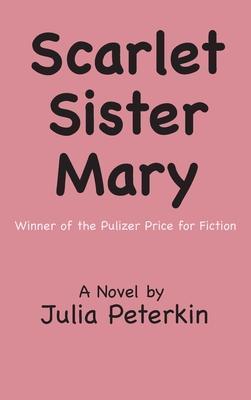Scarlet Sister Mary is a 1928 novel by Julia Peterkin. It won the Pulitzer Prize for the Novel in 1929. The book was called obscene and banned at the Gaffney, South Carolina public library. The Gaffney Ledger newspaper, however, serially published the complete book.
Scarlet Sister Mary is set among the Gullah people of the Low Country in South Carolina. The date is never established, but it appears to be around the beginning of the 20th century. The title character, Mary, was an orphan on an abandoned plantation who was raised by Auntie Maum Hannah and her crippled son Budda Ben. The description of Mary as "Scarlet Sister" reflects the basic conflict in the novel as Mary is torn between her desire to be a member of good standing in the church and a desire to live a life of sin and pleasure.
Julia began writing short stories inspired by the everyday life and management of the plantation. She was described as audacious as well as gracious by Robeson (1995). Peterkin sent highly assertive letters to people she did not know and had never met. For example, she wrote to authors Carl Sandburg and H. L. Mencken, and included samples of her writing about the Gullah culture of coastal South Carolina. Living chiefly on the plantation, she invited Sandburg, Mencken, and other prominent people to the plantation. Sandburg, who lived within a day's travel time in Flat Rock, North Carolina, visited. Although Mencken did not visit, he became Peterkin's literary agent in her early career, a possible testament to her persuasive letters. Eventually, Mencken led her to Alfred Knopf, who published Green Thursday, her first book, in 1924.
In addition to a number of subsequent novels, her short stories were published in magazines and newspapers throughout her career. Peterkin was among the few white authors to specialize in the African-American experience.
